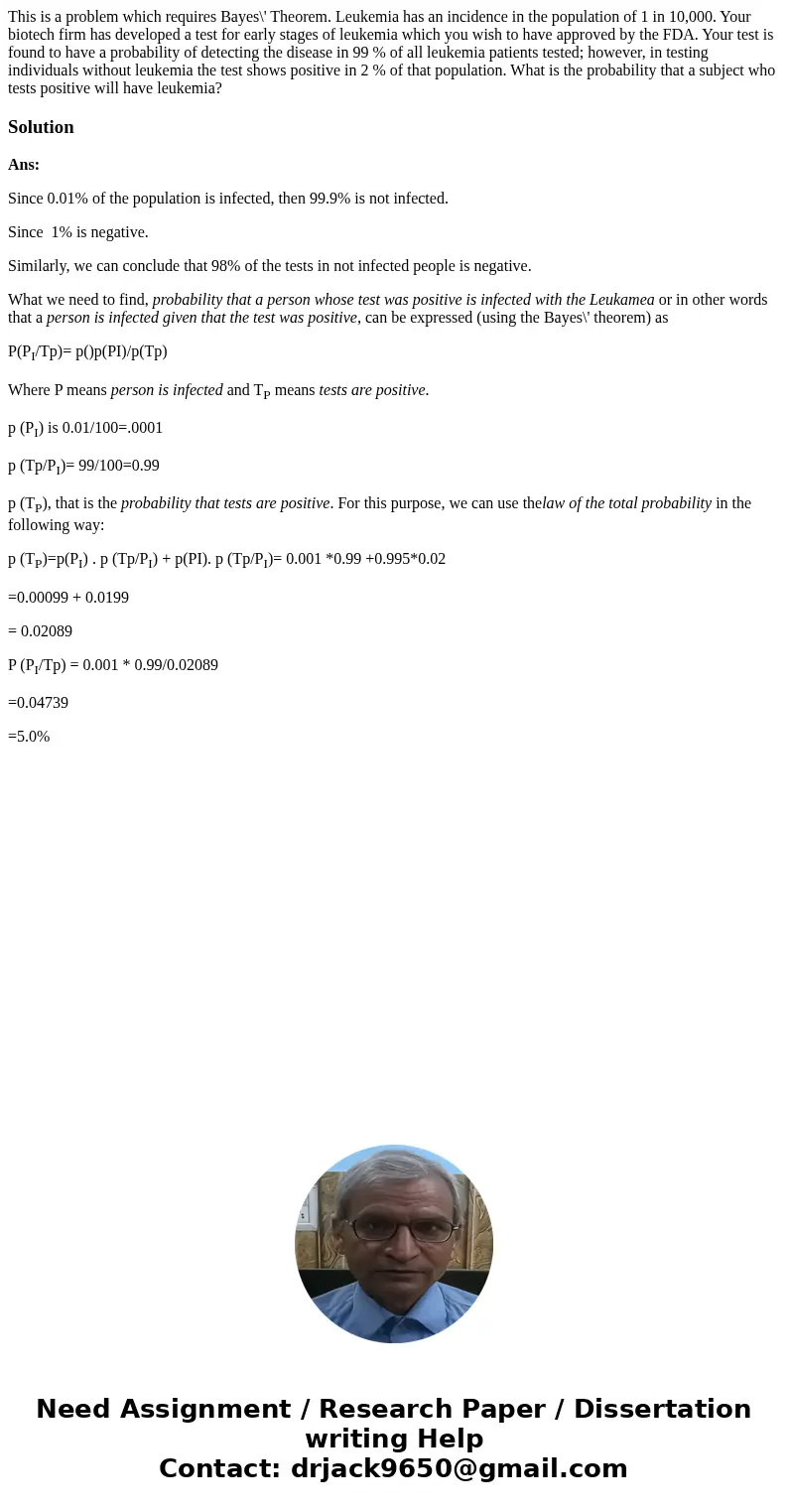This is a problem which requires Bayes Theorem Leukemia has
Solution
Ans:
Since 0.01% of the population is infected, then 99.9% is not infected.
Since 1% is negative.
Similarly, we can conclude that 98% of the tests in not infected people is negative.
What we need to find, probability that a person whose test was positive is infected with the Leukamea or in other words that a person is infected given that the test was positive, can be expressed (using the Bayes\' theorem) as
P(PI/Tp)= p()p(PI)/p(Tp)
Where P means person is infected and TP means tests are positive.
p (PI) is 0.01/100=.0001
p (Tp/PI)= 99/100=0.99
p (TP), that is the probability that tests are positive. For this purpose, we can use thelaw of the total probability in the following way:
p (TP)=p(PI) . p (Tp/PI) + p(PI). p (Tp/PI)= 0.001 *0.99 +0.995*0.02
=0.00099 + 0.0199
= 0.02089
P (PI/Tp) = 0.001 * 0.99/0.02089
=0.04739
=5.0%

 Homework Sourse
Homework Sourse